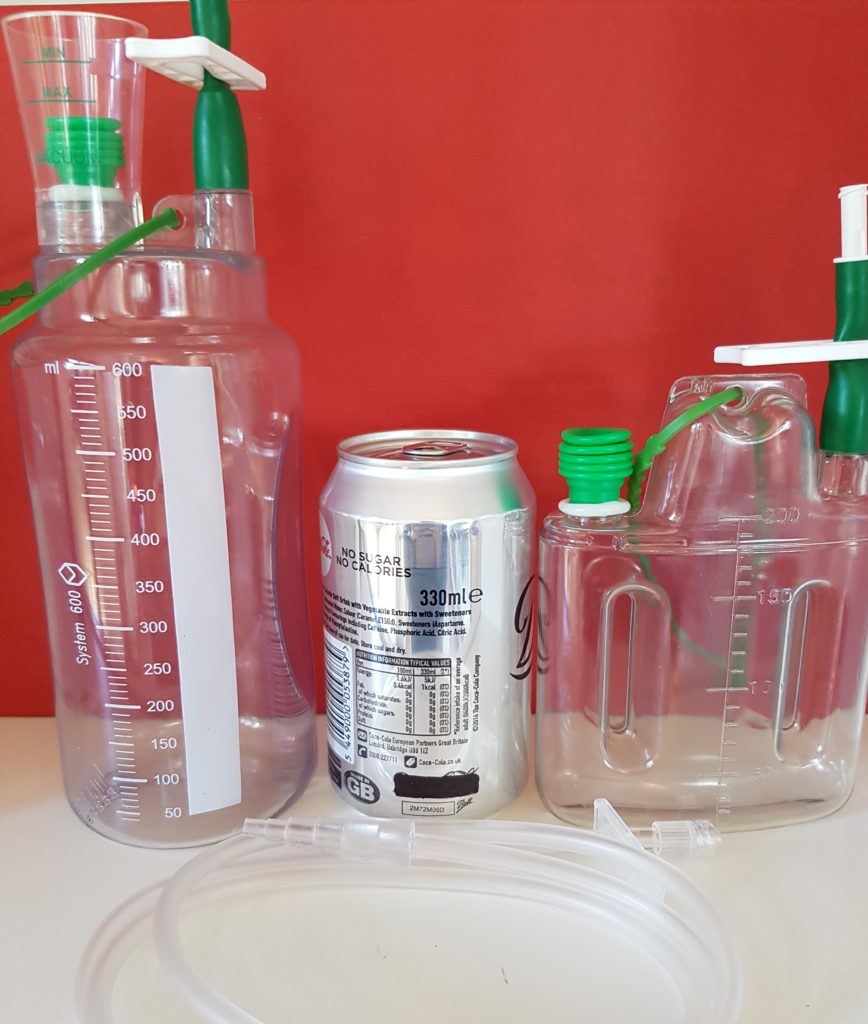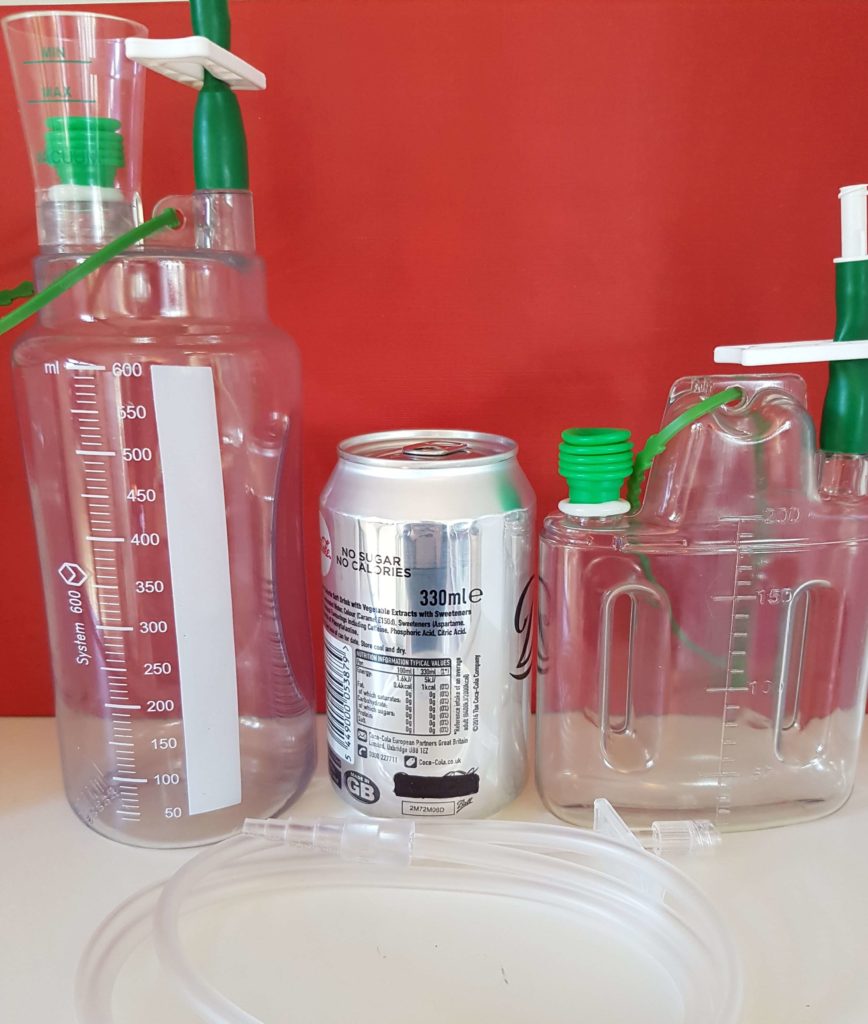When you have surgery, you may need to to have a surgical drain placed within the surgical site. This drain normally comes out through the skin. But what is a surgical drain? And specifically, if you have breast surgery, do you need to have one?
What is a surgical drain?
If you have had a breast operation, drains are normally used in the more extensive / complex of surgeries. Examples of these include a mastectomy or breast reconstruction. There are different types of drains. In general, a drain comprises a narrow plastic tubing (diameters vary but usually as wide as a straw) which we connect to a small plastic bottle. One end of the drain is placed within the operated site, the other end comes out through and sutured to the skin. This end is then connected to a bottle. The bottle itself is plastic, usually the size of a flask/water bottle, which is easily put in a bag to be carried around. Sometimes we use more than one drain, depending on the surgery.
Why do I need to have a surgical drain?
We use drains for several reasons. The body produces fluid that is a normal response to surgery. In breast surgery, this is called a seroma. The majority of the time, the body absorbs this fluid and no drains are needed. However, occasionally and depending on the type of surgery, surgeons prefer this fluid to be drained away from the surgical area. So, we put surgical drains in to help the body along to do its natural thing.
Another reason why surgeons use drains is to help monitor for any bleeding that may be taking place within the operated area. We can tell by what is seen within the drain bottle. If it is bloody, then there may be bleeding inside the wound.
The length of time a surgical drain remains in place varies depending on the type of surgery you have and the local practice of your hospital. This can range from a few days to a few weeks.

These are examples of two suction surgical drains with different capacities. You can judge their sizes by comparing it to the can of fizzy drink in the middle.
Occasionally, surgical drains can cause mild irritation within the surgical site. The majority of the time, however, they do not cause any problems. When it is time to remove the drain, we cut the anchoring suture and pull the drain out through the small opening on the skin. A small plaster is put over this, which we remove after a few days.


